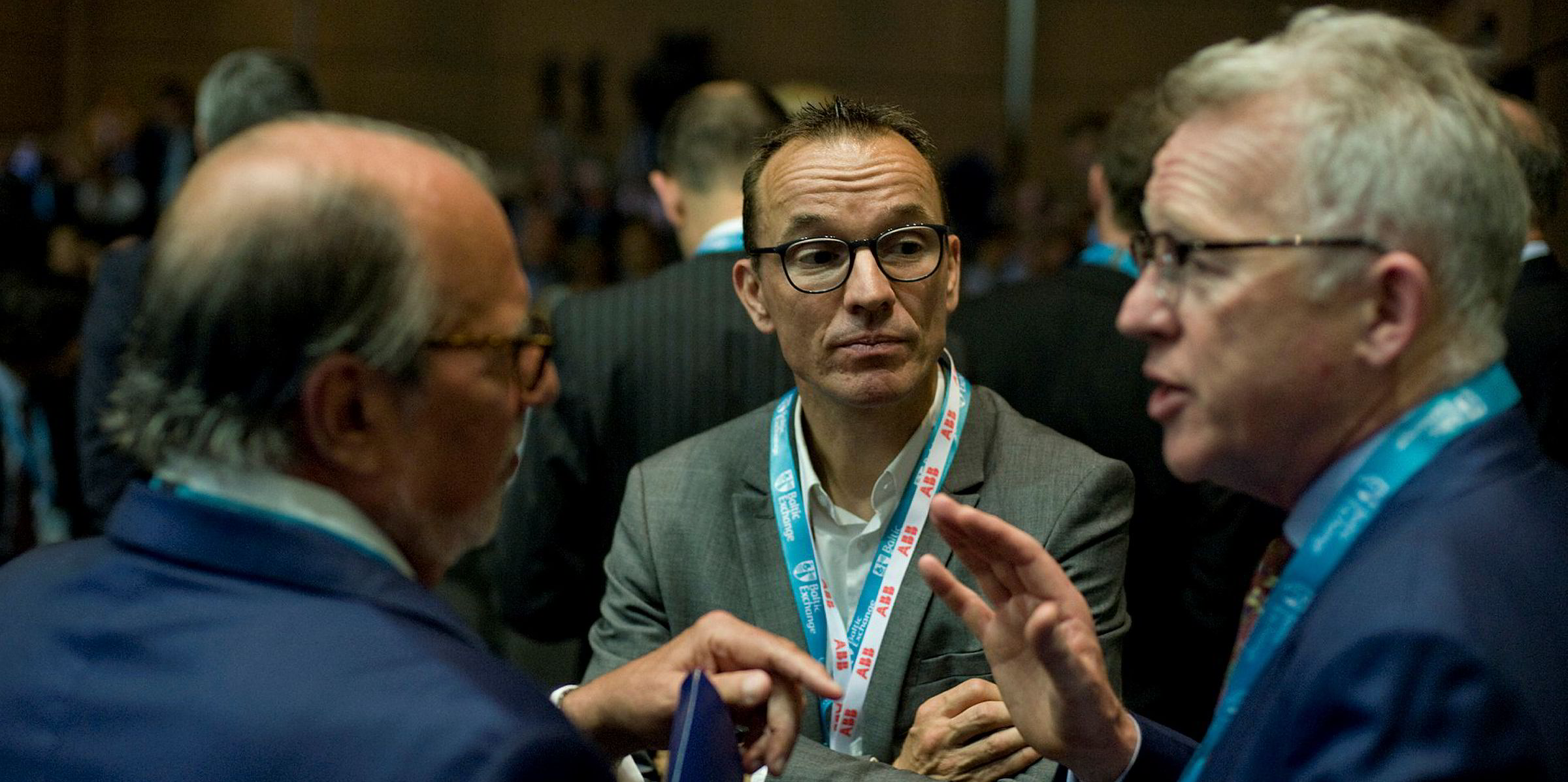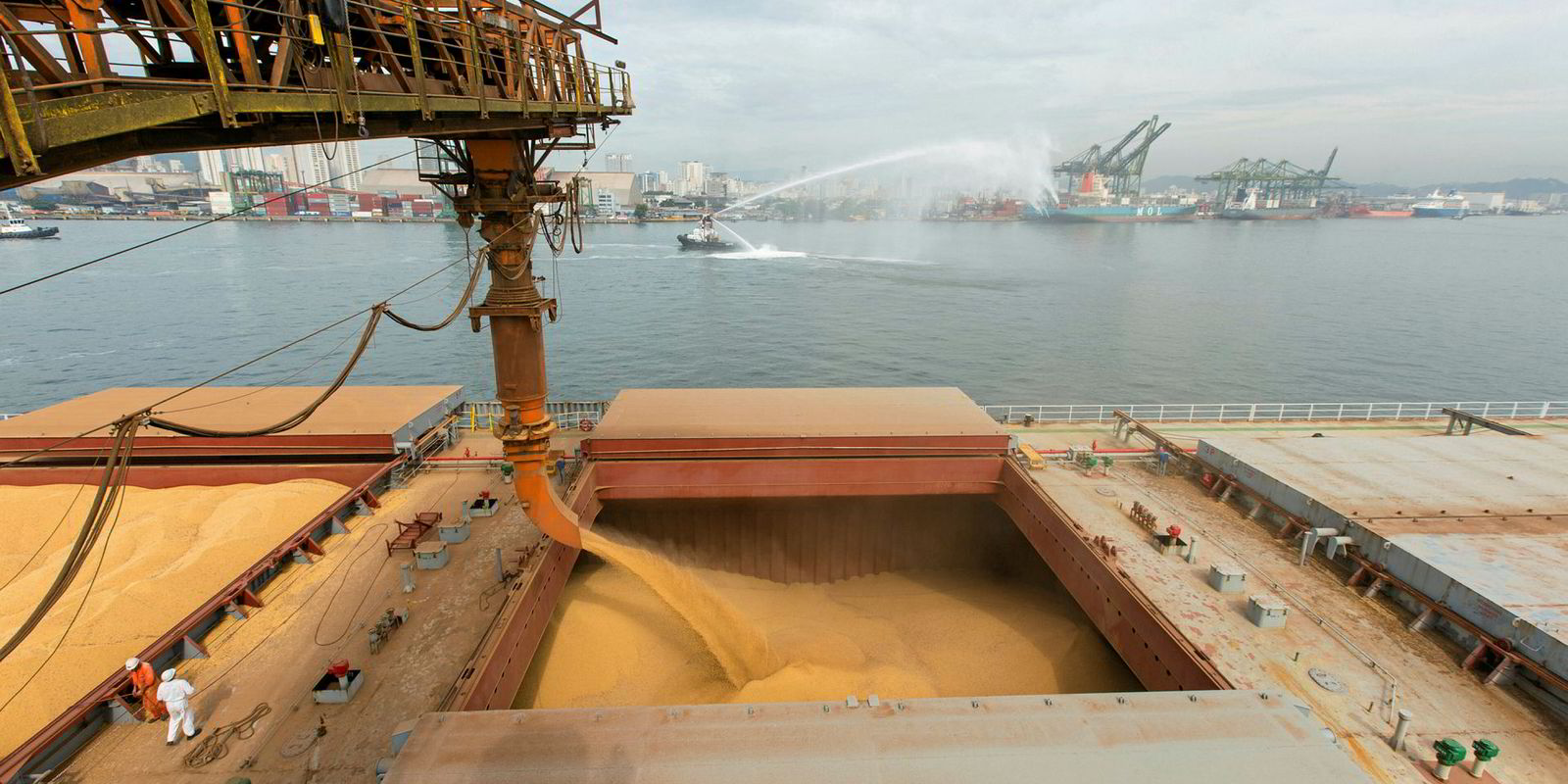Major grain trading houses are lukewarm in investing in vessels as assets, with seemly lacklustre earnings prospects of bulkers in relation to their newbuilding prices.
During a panel discussion at Mare Forum Geneva, some of the world’s largest bulker charterers showed little interest in asset investments as low values in forward freight agreements (FFA) may point to weak rate environments ahead.
“Rightly or wrongly, [the] forward market tells us this market doesn’t need any new ships,” said Cargill’s head of shipping, Jan Dieleman.
While explaining that his company will always look at investment opportunities, Dieleman said: “In the end of the day you need to have sustainable return for your investments.”
“There is very little long-term demand from end users. … Basically this means, if you take long-term commitment, someone is housing a risk. And who is going to pay for that?”
Since the fourth quarter of last year, FFA values have weakened by over 20% across vessel sizes. In contrast, newbuilding prices have increased slightly during the same time span, with firm steel prices and yards under pressure from their banks not to fetch loss-making deals.
“There is a big mismatch between asset prices and [FFA] values. … The gap is too big today,” Cofco International’s global head of freight Alessio La Rosa said.
In the tanker market, newbuilding projects backed by major charterers like Shell’s Project Solar can still materialise as time-charter rates remain strong.
“I do think there is a big difference between dry and wet,” Dieleman said.
Rates environments
The weakness in freight markets have largely resulted from lower Chinese coal and soybean imports and disruptions to Brazilian and Australian iron ore exports. The Baltic Dry Index has collapsed since the beginning of this year with little upwards momentum.
While panamax and supramax earnings have recovered as the grain export season of South America starts, capesize rates are still plagued by lower-than-normal iron ore shipments. For most of the past month, panamax and supramax earnings are higher than those of capesize vessels.
With swine fever hitting Chinese soybean demand, Amaggi’s head of freight Alex Haubert suggested the earnings of the smaller vessels might be negatively affected, though.
“The [Brazilian soybean export] volumes are dropping on a monthly basis,” according to Haubert, estimating the March volumes were below 10 million tonnes.
Dismal market conditions have led to a faster pace of demolition of old tonnage. Figures from GMS show 26 ships totalling 2.9 million dwt were recycled in the first quarter, compared with 56 vessels with 4.5 million dwt for the whole of 2018.
“Out of the 26 bulk carriers recycled, half of them are either capes or very large ore carriers (VLOCs),” GMS USA’s head of projects Evan Sproviero said. “[The average age is] 23 years for capes and VLOCs only.”
Scrapping rates are expected to stay firm, incentivising more demolition. “In the short term, I believe we will see mid-$400s [per ldt] or low-to-mid-$400s,” Sproviero said.





